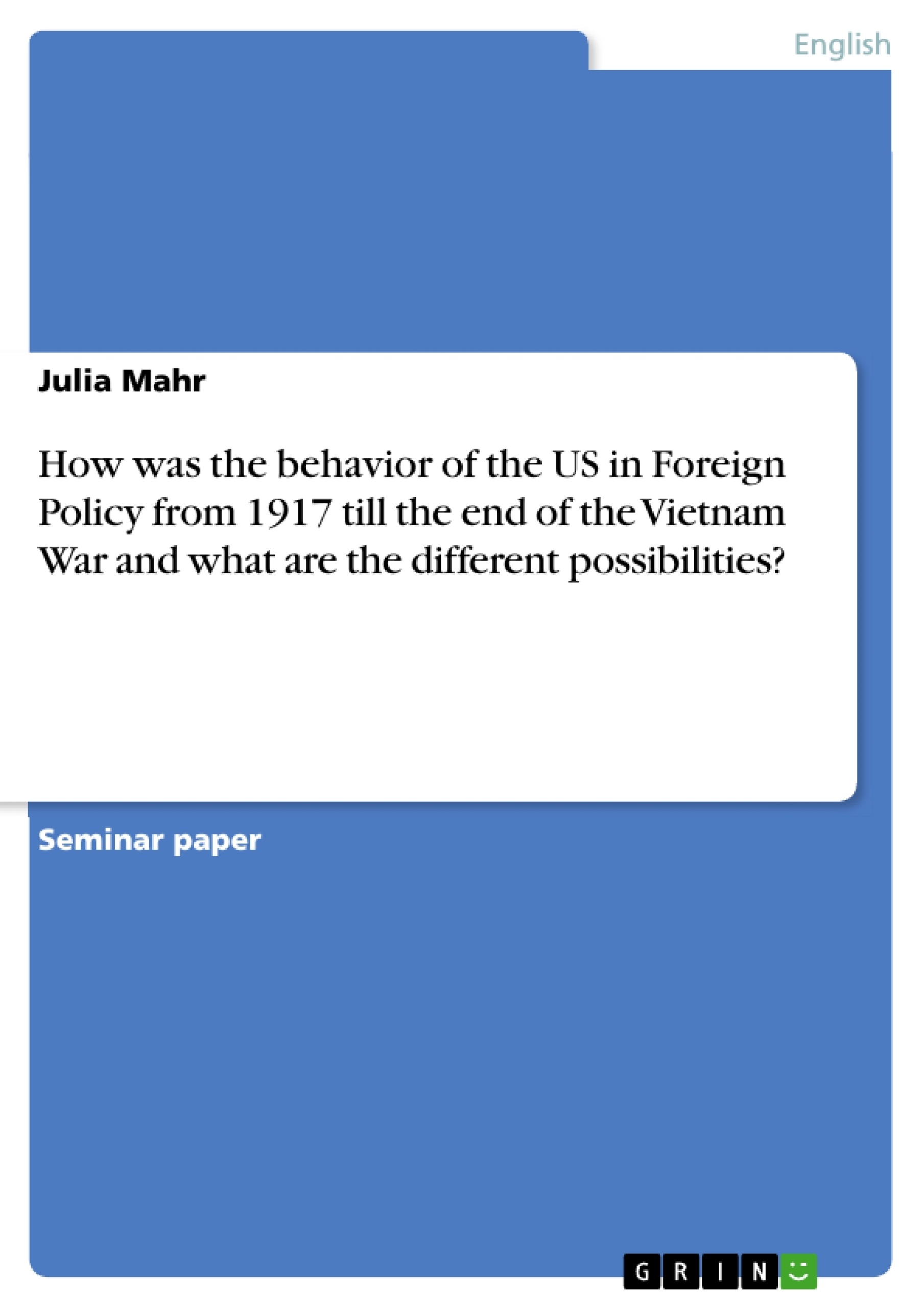“There is no power that has influenced international politics that much as the United States of America. Their behavior in the whole world, their initiative and achievements, but also their faults and omissions influenced the fate of almost every Nation in the whole world.” 1 The United States of America are the only superpower left after the Cold War. Their power is the result of a historical development. To understand their Foreign Policy it is necessary to have a closer look at their behavior through history. “[As] America has always been a nation of immigrants […] [and] […] started as an experience in democracy
fueled by Europeans” 2 the relations to other countries are multicultural and something special. “The systematic divisions between the United States and Europe on world affairs thus began before 9/11, and even before the arrival of the Bush administration. But the terrorist attacks on New York and Washington vastly accelerated those trends and expanded the gap between the American and European approaches.” Everybody has the horrible pictures of the terror-attacks of September 11th in mind and knows that this has changed the international situation more than ever before. And especially inside Germany the acting of the Unites States was not always seen to be the right thing. But as the United States of America also were the main power to built up Germany after the Second World War, I think its only fair to judge their acting not before having a closer look at their historical behavior in Foreign Policy. And so the central question of my seminar paper is how the behavior of the United States in Foreign
Policy was from 1917 till the end of the Vietnam War and what their different possibilities were. Therefore I will explain at first by which principles Foreign Policy can be guided so that I am able to have a look at different historical events during my seminar paper and try to make a decision whether
this has been an Internationalist, Isolationist, Unilateralist or Multilateralist phase. As the Foreign Policy isn’t guided by being a special phase it will not always be possible to say if it is exact the one or the
other. But I will try to gain a precise view as often as possible.
Inhaltsverzeichnis (Table of Contents)
- A. Introduction
- B. United States Foreign Policy since 1917
- I. Explanations
- 1. Foreign Policy
- 2. Ways of acting
- 2.1 Isolationists vs. Internationalists
- 2.2 Unilateralists vs. Multilateralists
- 2.3 Idealists vs. Realists as two schools of committed Multilateralists
- II. Judgment of important historical events
- 1. From 1917 - 1939: Between Internationalism and Isolationism
- 1.1 At the 1st World War
- 1.2 Reserved Foreign Policy in the 1920ies
- 1.3 Foreign Policy during the great Depression
- 2. Entering World Politics (1939 - 1945)
- 2.1 Before entering the 2nd World War
- 2.2 Pearl Harbor
- 2.3 Aim of war and building the alliance
- 2.4 War in Europe
- 2.5 Decision in Pacific
- 2.6 The time after war
- 3. Confrontation with the Soviet Union (1945 – 1962)
- 3.1 Setting up the state Israel
- 3.2 Beginning of the Cold War
- 3.3 The Korean War
- 3.4 Success in Europe
- 3.5 Fortification of the western Alliance
- 3.6 John F. Kennedy in office
- 3.7 Cuban Missile Crisis
- 4. The Vietnam War (1965-1973)
- 4.1 Into Vietnam
- 4.2 Combat Troops in Vietnam
- 4.3 Out of Vietnam
- 4.4 Results of Vietnam
- Quote paper
- Julia Mahr (Author), 2005, How was the behavior of the US in Foreign Policy from 1917 till the end of the Vietnam War and what are the different possibilities?, Munich, GRIN Verlag, https://www.grin.com/document/114000



